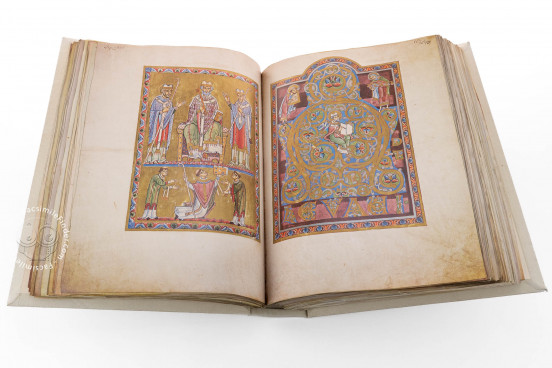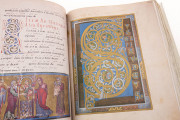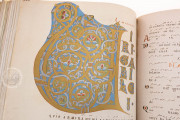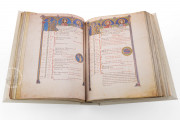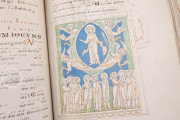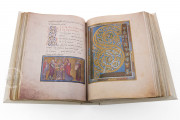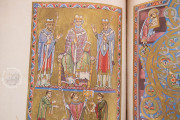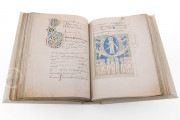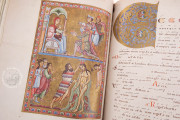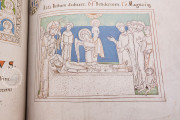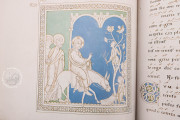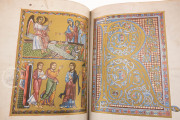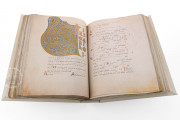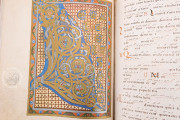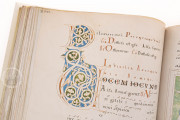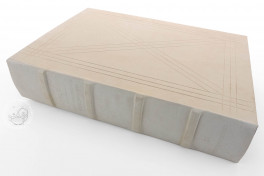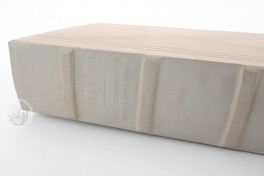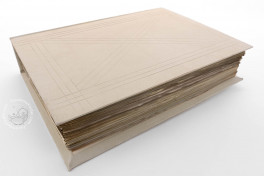The Gradual-Antiphonal of Saint Peter's, crafted in Salzburg around 1165, is one of the most splendid liturgical manuscripts ever made. Due to its exceptional value, for almost eight centuries it was mainly used in solemn occasions and kept safe in the library for the rest of the year. The codex, due to its format, is justly considered one of the most imposing manuscripts of the twelfth century.
Iconographic Project
The iconographic apparatus of the Antiphonary of St. Peter features several vividly painted miniatures on golden ground; another lavish decorative element are the golden initials painted on purple grounds, the typical color of Romanesque art.
The decorative elements include twelve calendar pages, two Easter tables, and more than 400 initials featuring decorative design such as flora and fauna.
The most lavish and intricate part of the antiphonary features six full-page illuminations and two half-page miniatures achieved with opaque color painting. Framing the figures painted with warm colors are golden gleaming backgrounds taking as a model the Byzantine method.
Opaque Color Painting and Pen Drawings
Another magnificent decoration are the lavishly illuminated full-length initials which exhibit a great ability in the use of gold and silver interlace, at times decorated with flowers and at time with animals and human figures.
The antiphonary, in addition to featuring the opaque color painting, also showcases forty-nine pen drawings which make use of the two inks used for the written text and which provide a visual consistency granted by their blue and green backgrounds.
These techniques – well-balanced and coherent – are only two of the several decorative elements present in the codex. Indeed, ornamental elements are featured on almost all pages, with vines, stylized foliage, animals, and flowers decorating the over 400 decorated initials.
One feature worthy of notice is the calendar section comprising twelve calendar pages, each displaying two saints together with a zodiac. Enigmatic numbers and letters are provided on the left margin of the page, which are of easy decryption once the reader has mastered the medieval computing technique which, in this case, calculates the date of Easter according to the position of the moon, thus explaining the presence of the two Easter tables.
Beautiful Example of Romanesque Script
The Gradual-Antiphonal of Saint Peter's exhibits an exquisite Romanesque script penned by several scribes, although their work shows very similar features. The presence of neumes of St Gall located above the lines is also worth noticing.
We have 1 facsimile edition of the manuscript "Gradual-Antiphonal of Saint Peter's": Das Antiphonar von St. Peter facsimile edition, published by Akademische Druck- u. Verlagsanstalt (ADEVA), 1969
Request Info / Price
